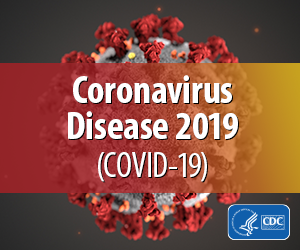Update - At a news briefing on December 2, 2020, the CDC offered two alternatives to shorten the quarantine period by those deemed to be “close contacts” of someone infected with COVID-19. Those without symptoms may end quarantine after seven days, after they had a negative test for the virus, or after 10 days without a negative test. P.C.R. or rapid tests are acceptable, the agency said, and should be taken within 48 hours of the end of the quarantine period. The CDC maintained that the safest option is to quarantine for 14 days following potential exposure to the virus.
The Centers for Disease Control recently changed the definition of “close contact,” as it relates to an individual’s exposure to someone with a confirmed case of COVID-19. In the prior guidance, the CDC defined “close contact” as an individual’s being within six feet of an infected person for fifteen consecutive minutes. With the change, the CDC now defines “close contact” as an individual’s being within six feet of an infected person for a cumulative total of fifteen minutes or more over a 24-hour period, starting from two days before the onset of symptoms from the infected person’s illness.
The change comes after a study reported spread of COVID-19 at a Vermont prison where an employee contracted COVID-19 after short, brief contacts with an infected incarcerated individual, which added up to more than 15 minutes over the course of the employee’s 8-hour shift.
This new definition will directly impact employers’ COVID-19 practices. The CDC had recommended that employers not permit employees to enter the workplace for 14 days following “close contact” with someone having COVID-19. Now, employers will need to determine who may have had “close contact” with someone having COVID-19 for a cumulative 15-minute period over the course of a 24-hour period, including persons who were not experiencing symptoms at the time. Practically, this can be expected to increase the number of employees who employers must send home to quarantine.
Employers should continue to follow CDC and state public health department guidelines including the limiting of meetings and other situations which require less than six feet of distance between individuals. In addition, employers should change the definition of “close contact” in all of their screening procedures. Employers should also consider the CDC’s new definition when determining whether an employee’s infection was work-related for purposes of OSHA reporting and recordkeeping and workers’ compensation.
If you have any questions concerning the CDC’s new definition of “close contact” or anything else regarding how COVID-19 affects the workplace, contact the authors or any other attorney in Benesch’s Labor and Employment Practice Group.
Joseph N. Gross at jgross@beneschlaw.com or 216.363.4163.
Yelena G. Katz at ykatz@beneschlaw.com or 216.363.4405
Brad Wenclewicz at bwenclewicz@beneschlaw.com or 216.363.6191
***
Please note that this information is current as of the date of this Client Alert, based on the available data. However, because COVID-19’s status and updates related to the same are ongoing, we recommend real-time review of guidance distributed by the CDC and local officials.

